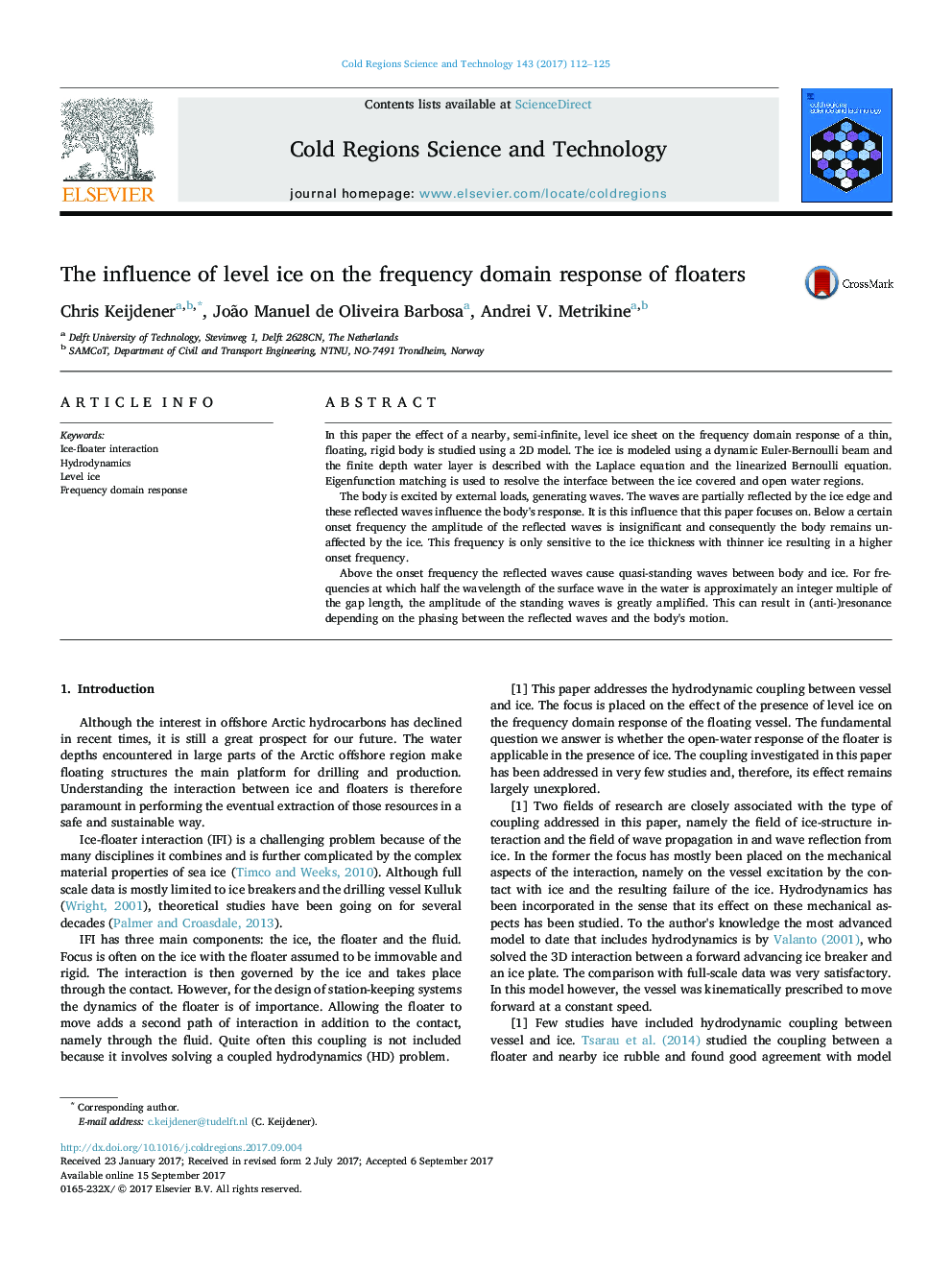| Article ID | Journal | Published Year | Pages | File Type |
|---|---|---|---|---|
| 5779385 | Cold Regions Science and Technology | 2017 | 14 Pages |
â¢Below a certain frequency level ice has no effect on the response of floater.â¢Above this frequency quasi-standing waves occur between ice and floater.â¢These quasi-standing waves can greatly amplify the response of the floater.â¢This amplification results in (anti-)resonance peaks in the floater's response.
In this paper the effect of a nearby, semi-infinite, level ice sheet on the frequency domain response of a thin, floating, rigid body is studied using a 2D model. The ice is modeled using a dynamic Euler-Bernoulli beam and the finite depth water layer is described with the Laplace equation and the linearized Bernoulli equation. Eigenfunction matching is used to resolve the interface between the ice covered and open water regions.The body is excited by external loads, generating waves. The waves are partially reflected by the ice edge and these reflected waves influence the body's response. It is this influence that this paper focuses on. Below a certain onset frequency the amplitude of the reflected waves is insignificant and consequently the body remains unaffected by the ice. This frequency is only sensitive to the ice thickness with thinner ice resulting in a higher onset frequency.Above the onset frequency the reflected waves cause quasi-standing waves between body and ice. For frequencies at which half the wavelength of the surface wave in the water is approximately an integer multiple of the gap length, the amplitude of the standing waves is greatly amplified. This can result in (anti-)resonance depending on the phasing between the reflected waves and the body's motion.
